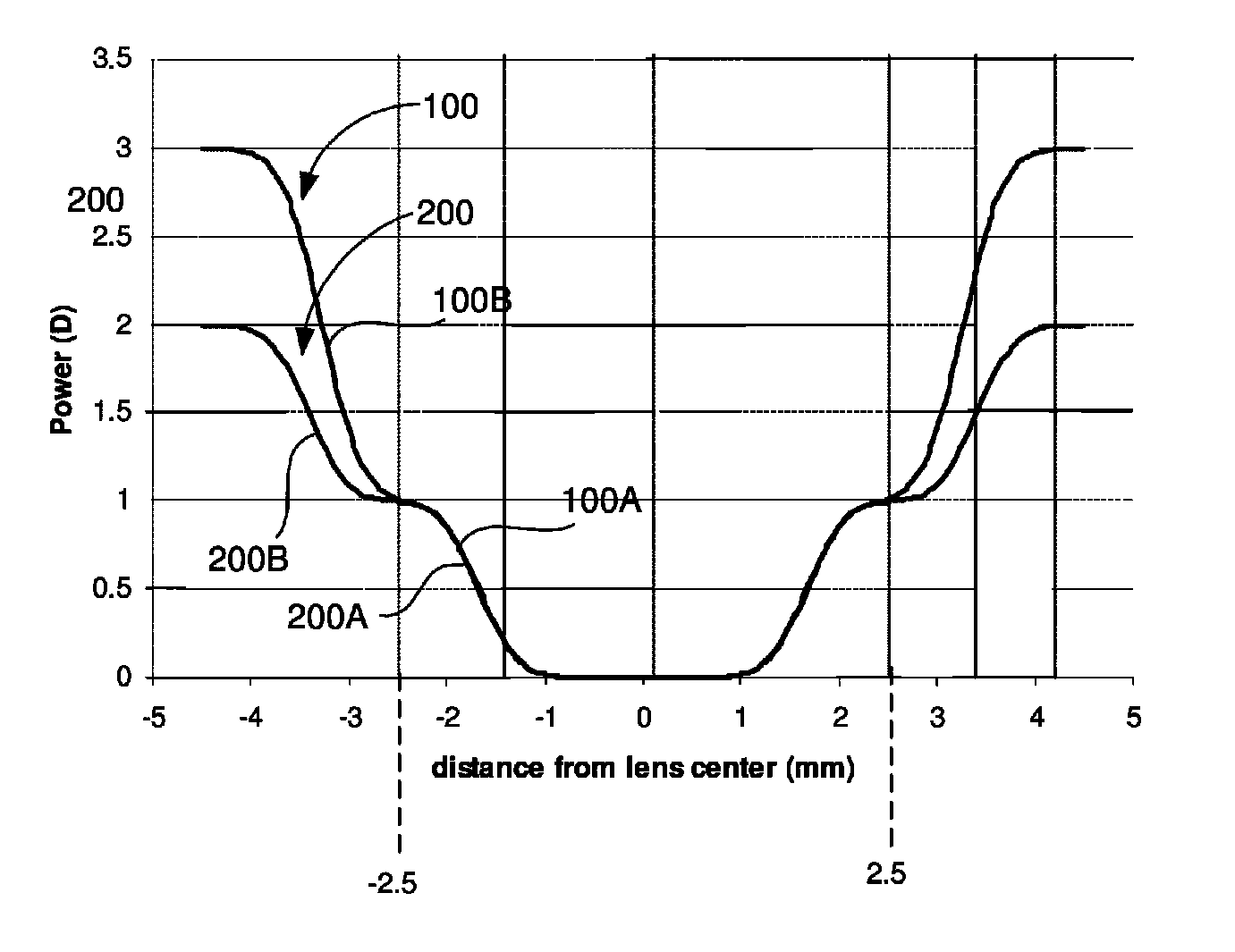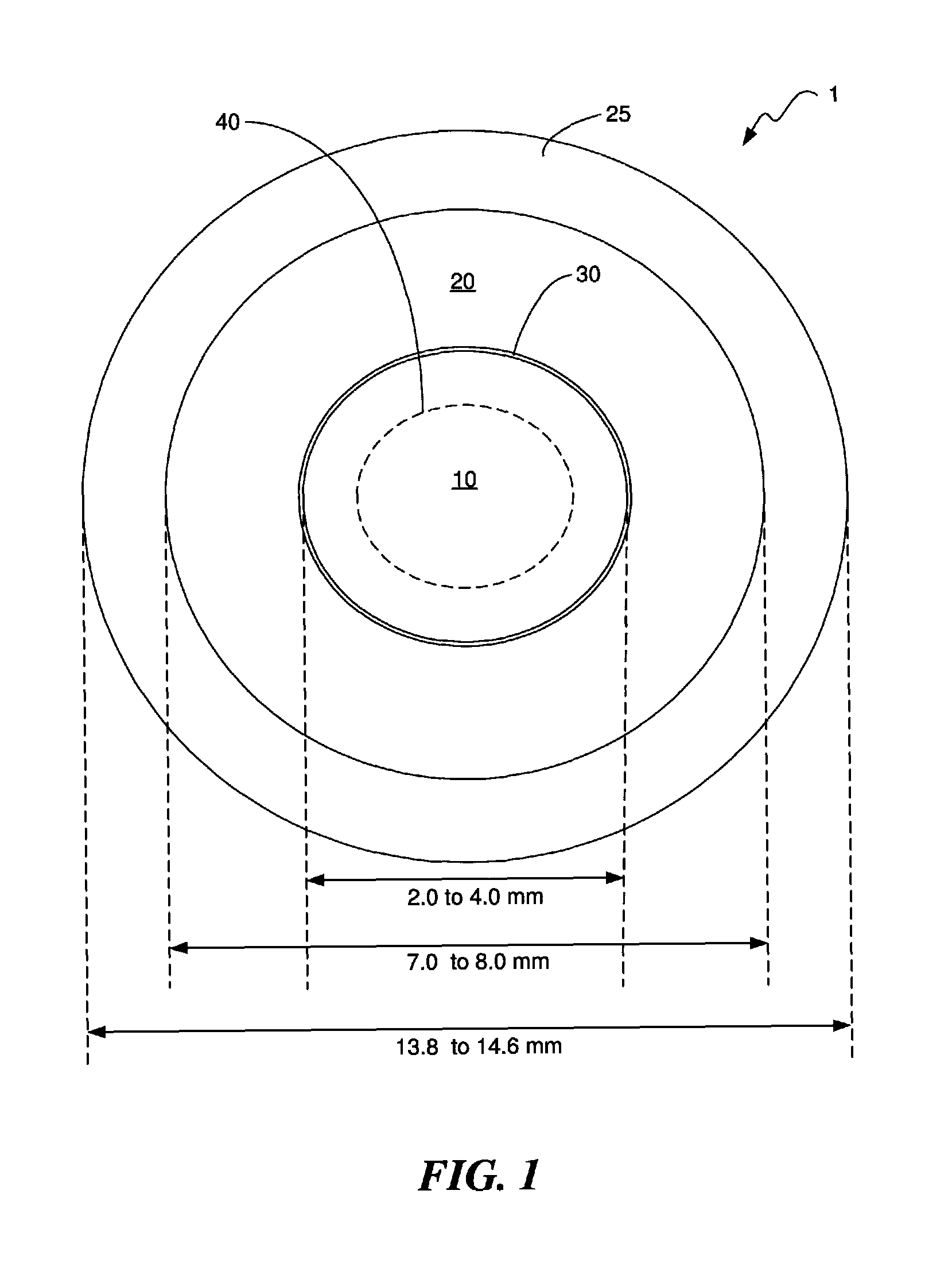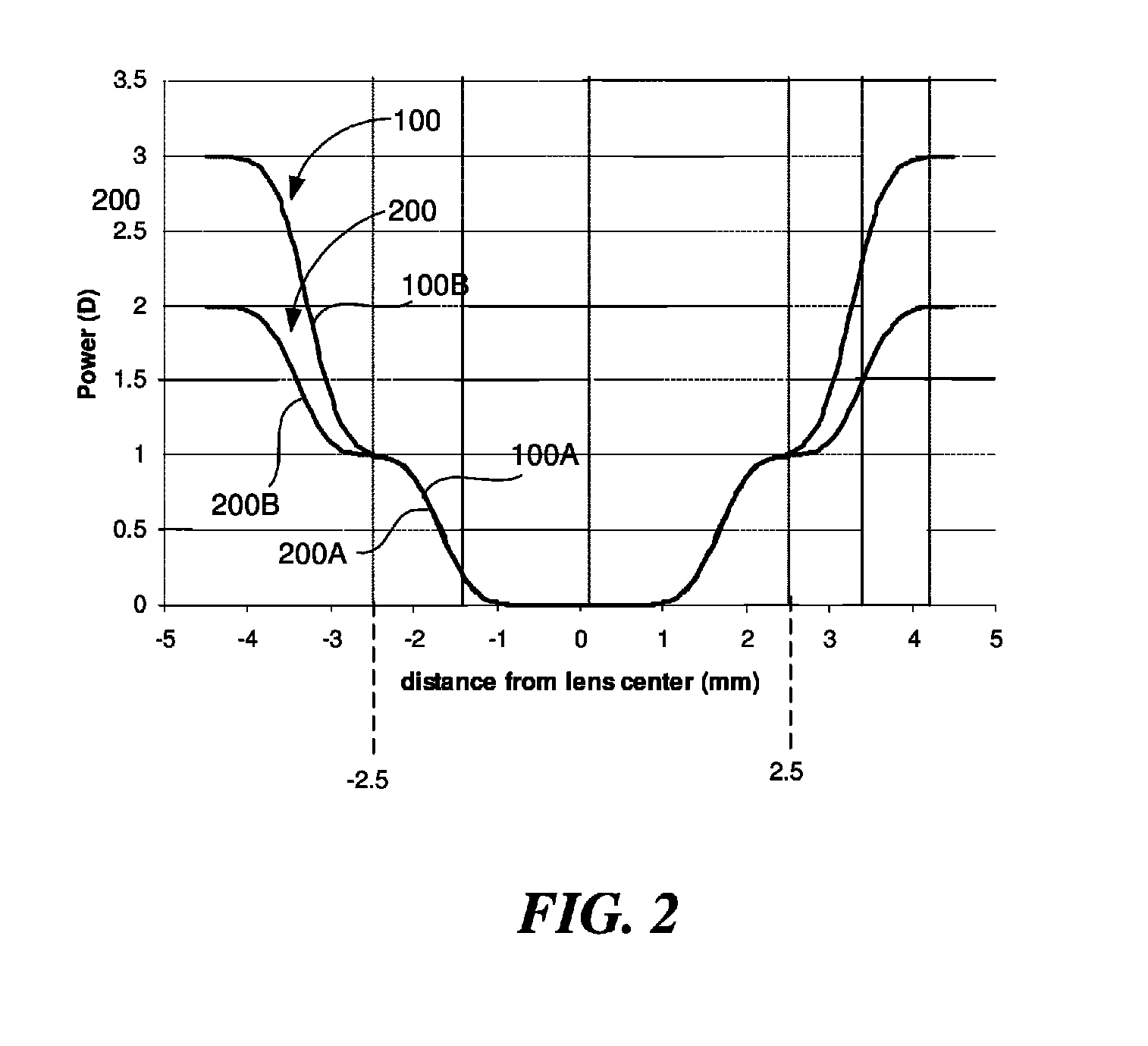Lens design and method for preventing or slowing the progression of myopia
a technology of contact lenses and myopia, which is applied in the field of contact lenses, can solve the problems of inability to see distant objects clearly without a correction lens, the condition of nearsightedness usually worsens, and the growth of the eyeball along its longitudinal axis, so as to reduce the on-axis and off-axis hyperopic defocus, prevent myopia, and slow the progression of myopia
- Summary
- Abstract
- Description
- Claims
- Application Information
AI Technical Summary
Benefits of technology
Problems solved by technology
Method used
Image
Examples
Embodiment Construction
[0019]In accordance with the invention, a lens is provided that creates on-axis and off-axis myopic defocus to reduce on-axis and off-axis hyperopic defocus by in the eye of the wearer. Using on-axis and off-axis myopic defocus to reduce on-axis and off-axis hyperopic defocus has the effect of preventing, or at least slowing, excessive growth of the eyeball along the longitudinal axis. In addition, although the lens creates on-axis myopic defocus, the lens does not result in any perceptible degradation in the quality of the wearer's central vision.
[0020]In accordance with the invention, experiments were conducted using three categories of lenses: (1) known lens designs that provide only on-axis myopic defocus; (2) known lens designs that provide only off-axis myopic defocus; and (3) lenses designed in accordance with the invention to provide both on-axis and off-axis myopic defocus. One of the purposes of the experiments was to determine how much greater the degradation in central v...
PUM
 Login to View More
Login to View More Abstract
Description
Claims
Application Information
 Login to View More
Login to View More - R&D
- Intellectual Property
- Life Sciences
- Materials
- Tech Scout
- Unparalleled Data Quality
- Higher Quality Content
- 60% Fewer Hallucinations
Browse by: Latest US Patents, China's latest patents, Technical Efficacy Thesaurus, Application Domain, Technology Topic, Popular Technical Reports.
© 2025 PatSnap. All rights reserved.Legal|Privacy policy|Modern Slavery Act Transparency Statement|Sitemap|About US| Contact US: help@patsnap.com



